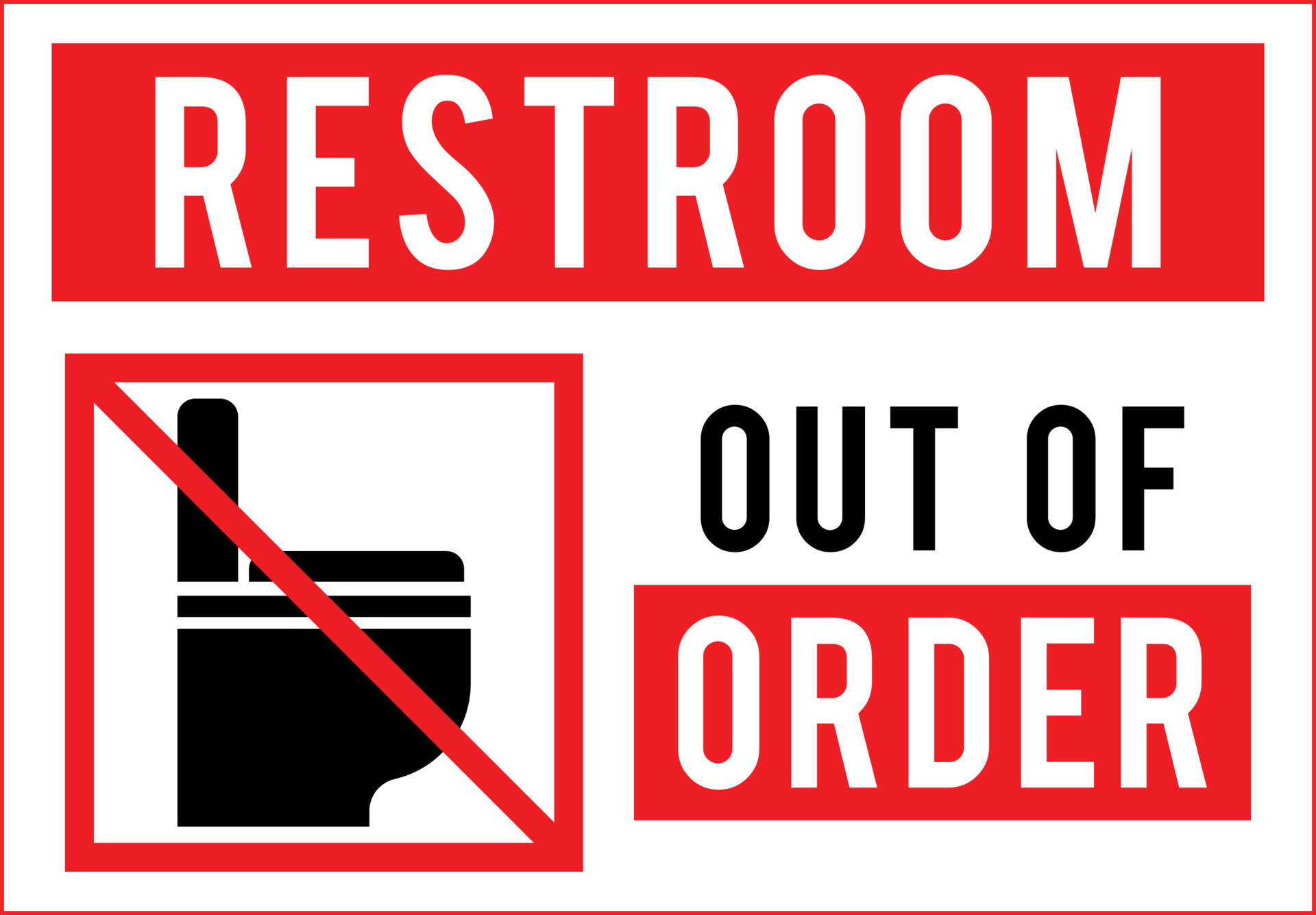The History and Evolution of the “One Door Warning” Sign

The “One Door Warning” sign, a ubiquitous fixture in public restrooms, has a fascinating history that reflects evolving societal norms and attitudes towards gender identity and bathroom usage. Its evolution, from simple cautionary notices to more inclusive and nuanced signage, offers a glimpse into the changing landscape of gender expression and the increasing importance of inclusivity in public spaces.
Early Origins and Evolution
The earliest forms of “One Door Warning” signs were simple and functional, primarily focusing on safety and hygiene. These signs, often hand-painted or printed on basic materials, used straightforward language like “Men” or “Women” to designate the appropriate restroom. However, as society progressed and awareness of gender identity and inclusivity grew, the design and wording of these signs began to evolve.
The Rise of Gender-Neutral Restrooms
The increasing acceptance of gender-neutral restrooms in the late 20th and early 21st centuries marked a significant shift in the design and wording of “One Door Warning” signs. These signs, often featuring symbols like a silhouette of a person or a universal restroom icon, reflected a growing understanding of the diversity of gender identities and the need for inclusive spaces.
The Impact of Social Movements
Social movements advocating for LGBTQ+ rights and gender equality played a pivotal role in shaping the evolution of “One Door Warning” signs. These movements raised awareness about the need for inclusive restrooms that cater to a broader spectrum of gender identities. As a result, many public institutions and businesses began to adopt gender-neutral restrooms and update their signage accordingly.
The Cultural Significance of the “One Door Warning” Sign: One Door Warning Bathroom Meaning

The “One Door Warning” sign, a seemingly simple indicator of occupied space, carries a weight of cultural significance far beyond its practical function. This ubiquitous sign, often found in bathrooms, plays a crucial role in shaping our perceptions of gender, privacy, and personal boundaries within these intimate spaces.
The Sign’s Role in Gendered Spaces
The “One Door Warning” sign is often associated with a specific gendered space. In many public bathrooms, the sign is primarily used to indicate an occupied women’s restroom, contributing to the perception that women’s bathrooms require more privacy than men’s. This association, while seemingly innocuous, can reinforce existing gender stereotypes and perpetuate the idea that women are more delicate or need more privacy than men.
The Sign’s Impact on Individual Experiences
The presence of the “One Door Warning” sign can have a significant impact on individual experiences within the bathroom. For some, the sign provides a sense of safety and security, knowing that they are protected from unwanted intrusions. For others, the sign can evoke feelings of anxiety or discomfort, particularly in situations where they may feel vulnerable or exposed. This can be especially true for individuals who identify as transgender or non-binary, who may feel uncomfortable using bathrooms designated for a specific gender.
Comparison with Other Bathroom Signage, One door warning bathroom meaning
The “One Door Warning” sign stands out from other types of bathroom signage, such as “Occupied” or “Vacant” signs, in its unique focus on privacy. While other signs simply indicate the availability of a stall, the “One Door Warning” sign explicitly addresses the need for privacy and personal space. This distinction highlights the importance of privacy within bathroom spaces and reinforces the idea that these spaces are not solely for functional use but also serve as spaces for personal reflection and hygiene.
The “One Door Warning” Sign in Contemporary Society
The “one door warning” sign, once a ubiquitous fixture in public restrooms, has come under increasing scrutiny in recent times. While its original purpose was to provide a simple and straightforward indication of gender-segregated facilities, the sign’s continued use in a rapidly evolving social landscape raises questions about its relevance and inclusivity.
The “One Door Warning” Sign’s Potential to Perpetuate Gender Stereotypes
The binary nature of the “one door warning” sign, with its distinct “Men” and “Women” labels, reinforces the traditional, binary understanding of gender. This can perpetuate harmful stereotypes by suggesting that there are only two possible genders and that everyone must fit neatly into one of these categories. This approach excludes individuals who identify as transgender or non-binary, who may not feel comfortable using restrooms designated for their assigned sex at birth.
“The “one door warning” sign, with its simple and straightforward indication of gender-segregated facilities, has come under increasing scrutiny in recent times.”
The Impact on Transgender and Non-Binary Individuals
The “one door warning” sign can create a hostile and unsafe environment for transgender and non-binary individuals. These individuals may feel forced to use a restroom that does not align with their gender identity, leading to feelings of discomfort, anxiety, and even fear. This can result in avoidance of public restrooms altogether, which can have significant implications for their health and well-being.
“The binary nature of the “one door warning” sign, with its distinct “Men” and “Women” labels, reinforces the traditional, binary understanding of gender.”
Alternative Approaches to Bathroom Signage
Many organizations and institutions are adopting alternative approaches to bathroom signage that promote inclusivity and respect for all individuals. These approaches include:
- Gender-neutral restrooms: These restrooms are designed for use by all individuals, regardless of their gender identity. They are often marked with a single symbol, such as a stick figure or a silhouette, rather than “Men” and “Women” labels.
- Multi-stall restrooms: These restrooms have multiple stalls, each with its own lockable door, providing greater privacy and reducing the need for gender-specific designation.
- Universal restroom signage: This approach uses language that is inclusive and avoids gender-specific terminology. For example, instead of “Men’s Room” and “Women’s Room,” the signs might read “Restrooms” or “Toilet Facilities.”
“These approaches include: gender-neutral restrooms, multi-stall restrooms, and universal restroom signage.”
